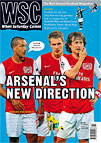 Despite the 2010 World Cup the South African Soccer League is struggling to draw crowds, writes George Thomson
Despite the 2010 World Cup the South African Soccer League is struggling to draw crowds, writes George Thomson
The Cape Town Stadium might just be the most spectacular football arena in the world. Perched on the ocean’s edge between upmarket Green Point and the tourist-friendly Victoria and Albert waterfront, the location was earmarked specifically by Sepp Blatter, who felt the dramatic backdrop of Table Mountain would provide the defining image of the 2010 World Cup finals.
Yet in the months since 62,479 people witnessed a thrilling semi-final between Uruguay and Holland and the venue was handed back to the City of Cape Town, the $600 million (£367m) stadium has resembled an awkward teenager at a high-school dance, desperately asking around for partners to no avail.
Stade de France, the operating company due to take on a 30-year lease, backed out of the deal, saying its shareholders were not prepared to support the “projected substantial losses” it would incur. Repeated attempts to woo the Stormers Super Rugby side were knocked back, their 50,000-seat Newlands ground – unused at the World Cup – would do fine, thanks.
Finally, at the start of August, Ajax Cape Town agreed to use the stadium as their home ground for the coming season. The club will pay the city per game, depending on the match category and the number of spectators. The early signs have not been good. On August 5, just 4,500 fans turned up to see Ajax beat SuperSport United 5-2 in the quarter-final of the pre-season MTN 8 cup. Club officials dismissed the low attendance and with some justification – the cup has always struggled for popularity and Ajax can expect to draw crowds of over 30,000 to games against major clubs such as Orlando Pirates and Kaizer Chiefs.
But these problems provide a stark example of how the World Cup legacy for South Africa’s Premier Soccer League (PSL) looks increasingly tenuous. A year ago, concerns about the viability of a number of the 2010 stadiums were assuaged by the feeling that South Africa had performed well as hosts and the resultant glow would surely rub off on the PSL. But an upswing in attendances failed to materialise – average crowds in 2010-11 were almost half those of the previous year.
The most obvious cause was the decision to double minimum ticket prices to R40 (£3.50). While the goodwill and razzmatazz that surrounded the World Cup brought football to the affluent suburbs for the first time, the game remains a largely working-class pursuit. For those towards the bottom of the economic ladder R40 is a lot of money, and the hike served to alienate further a large number of fans already sidelined by the prohibitive cost of the World Cup.
The move presents a particular challenge to the league’s small and medium-sized clubs. South African football is hugely imbalanced in terms of support, with the majority of enthusiasts following one of Soweto rivals Kaiser Chiefs or Orlando Pirates. A Pirates or Chiefs game held in Cape Town or Durban is likely to far outsell any match involving local teams.
The disparity in fanbases has been deepened further by the burden of World Cup stadiums in far-flung cities like Polokwane and Nelspruit. With municipal officials anxious to glean any kind of use for their empty arenas, an open market has emerged in which cities bid to host glamour ties involving the Soweto giants or foreign sides, often at great cost to the public purse and to the detriment of attempts to generate a following for the local team. The recent announcement that South Africa will host the 2013 Africa Cup of Nations in place of Libya will come as a welcome boost for beleaguered stadium managers, but the fact remains that without anchor tenants a number of grounds will remain a burden on public finances.
This was not supposed to happen. As the 15th richest league in the world, the PSL boasts lucrative TV and sponsorship deals and can draw upon a vast reservoir of enthusiasm for the game. But attendances remain dismally low – a recent editorial in the popular magazine Soccer Laduma noted that their circulation far outstripped the number of fans that had attended PSL fixtures the previous weekend. In a nation where public transport is patchy and the TV market is saturated with competing sports channels, enticing supporters to the grounds has always proved difficult. Officials at Ajax were upset when only six of their 15 home games this season were scheduled for Friday nights. Last year, the average home crowd increased from 3,000 to 12,000 following the “family Friday night” marketing campaign.
Rather than acting as a springboard for the PSL’s growth, the World Cup has entrenched existing problems by draining resources and further distorting a fragile and fluid fan culture. By erecting stadiums such as Durban’s 70,000-seat Moses Mabhida Stadium, which sits a stone’s throw away from the Kings Park rugby ground but far removed from traditional football-supporting communities, FIFA left behind a toxic legacy for a league attempting to run before it can even walk.
From WSC 296 October 2011